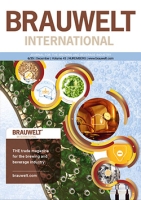Possibilities for Optimising Wort Preparation – Part 4
Wort preparation is at the heart of beer production, yielding wort for fermentation from water, malt and hops natural raw materials. The fourth part of this series of publications provides an ultimate answer to the issue of the best process for removing DMS from wort.



 6 print issues
6 print issues